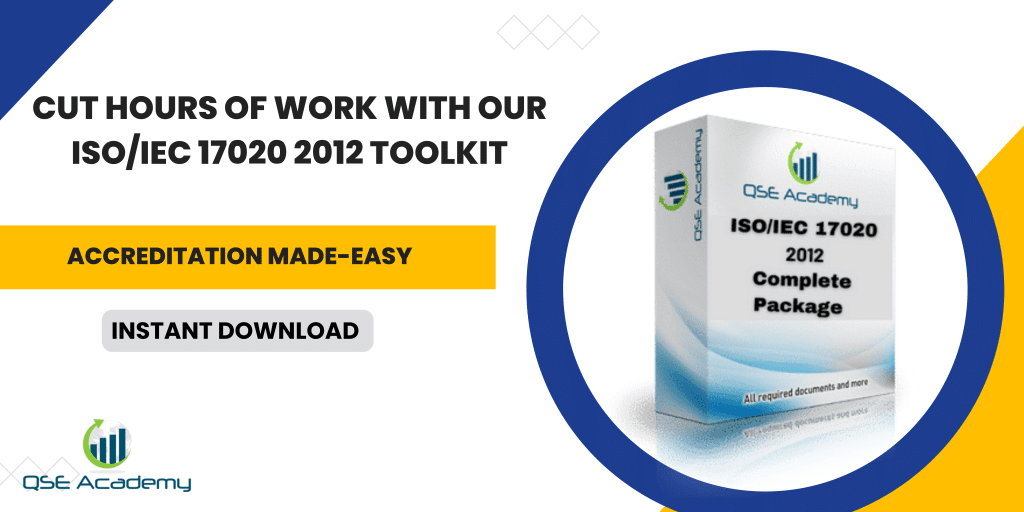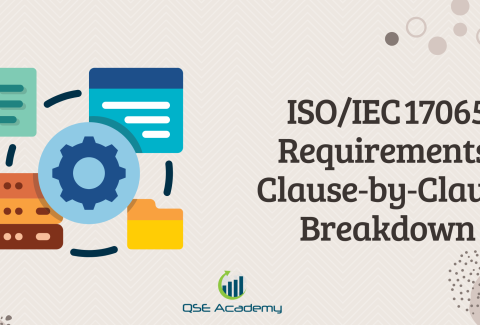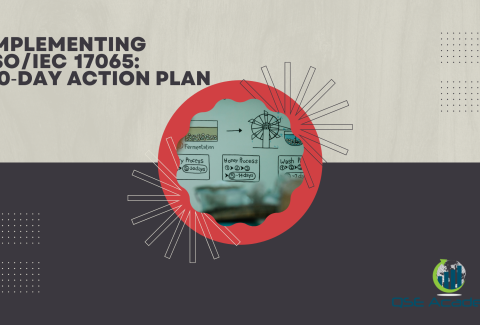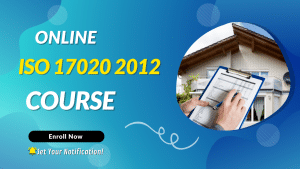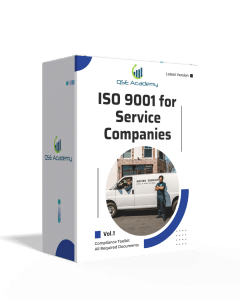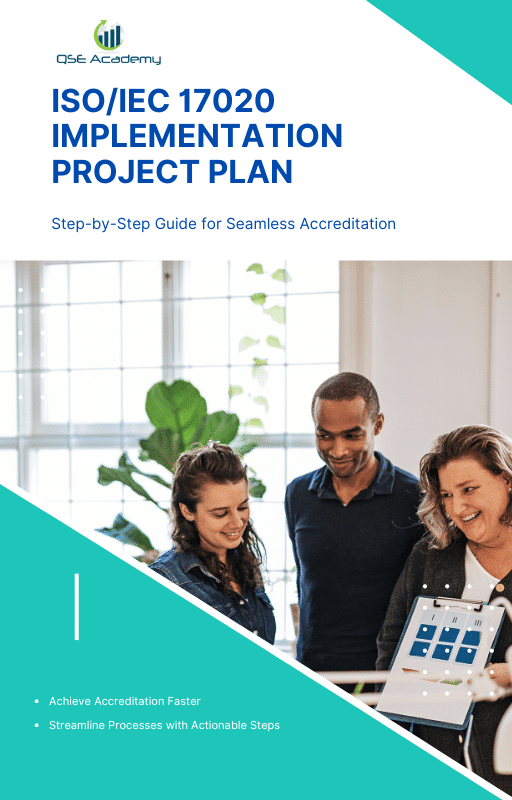ISO/IEC 17020 Clause 8: Management System Options A & B
Last Updated on October 22, 2025 by Hafsa J.
The Management System That Holds Everything Together
If Clauses 4 to 7 are about doing inspections right, Clause 8 is about keeping it that way. It’s the engine room of consistency—the management system that ensures everything you do stays controlled, reviewed, and continuously improved.
Here’s what I’ve noticed: some inspection bodies think of Clause 8 as an afterthought, a formality at the end of the standard. But it’s the opposite. It’s what holds your entire ISO/IEC 17020 system together. Without a proper management framework, even the most skilled inspectors and calibrated tools can fall short.
Clause 8 gives you two paths to compliance—Option A and Option B. One’s simple and self-contained. The other integrates with ISO 9001. The good news? Both are equally valid for accreditation. The key is choosing the one that fits your organization’s size, structure, and existing systems.
By the end of this guide, you’ll know exactly what each option requires, how they differ, and how to build a management system that not only passes audits—but makes your inspection body stronger, more efficient, and more credible.
What Clause 8 Is All About – The System Behind the Standard
Clause 8 is where ISO/IEC 17020 ties everything together. It’s not about one department or one process—it’s about how your entire organization works as a system. Think of it as the control room that keeps Clauses 4 through 7 running smoothly and consistently.
Here’s what that means: Clause 8 requires you to establish, implement, and maintain a management system that ensures impartiality, competence, and consistent inspection results. It’s your structure for policies, procedures, records, reviews, and improvements—all documented and maintained under control.
I often tell clients that Clause 8 is like the “operating manual” for your inspection body. Without it, things drift—documents get outdated, corrective actions stall, and internal audits become a scramble. With it, you have rhythm and reliability.
Pro Tip: Before writing anything, map your system. Identify what procedures you already have (document control, internal audits, management reviews, corrective actions) and which ones you still need. Building from what works keeps your system lean and practical.
A common mistake? Treating Clause 8 as a paperwork exercise. Auditors aren’t looking for piles of documents—they’re looking for evidence that your system works.
Now that you know the purpose, let’s look at your first choice: Option A, the built-in management system for ISO/IEC 17020.
Option A – The Built-In ISO/IEC 17020 System
Option A is like building your own management system from the ground up—simple, direct, and focused entirely on ISO/IEC 17020. You don’t need ISO 9001 certification; you just need to meet all the requirements of Clause 8.
Here’s how it works: under Option A, your inspection body must have a documented system that covers:
-
Policies and procedures for quality, impartiality, and confidentiality.
-
Document control—ensuring only approved versions are used.
-
Internal audits—regular checks that your system is followed and effective.
-
Management reviews—top management evaluates performance, risks, and improvements.
-
Corrective actions—when something goes wrong, you investigate and fix it permanently.
-
Continual improvement—evidence that your system evolves, not just operates.
In my experience, Option A works best for small to mid-sized inspection bodies or independent divisions that only need ISO/IEC 17020 accreditation. It’s lean, focused, and avoids the overhead of a full ISO 9001 system.
Pro Tip: Keep Option A practical. Use flowcharts and short procedures instead of dense manuals. Auditors value clarity over volume.
A common pitfall? Writing generic policies without linking them to real processes. Clause 8 expects your system to reflect how your team actually works, not how a template says you should.
If your inspection body is part of a larger organization already certified to ISO 9001, Option B might make more sense—let’s look at that next.
Option B – Integrating with ISO 9001
Option B is for inspection bodies that already have (or operate under) an ISO 9001 quality management system. Instead of maintaining two separate systems, you can align ISO/IEC 17020’s requirements with your existing ISO 9001 framework.
Here’s the advantage: ISO 9001 already covers many of the fundamentals—document control, internal audits, corrective actions, and management reviews. Option B simply builds on that foundation, adding inspection-specific controls like impartiality, confidentiality, and technical competence.
In my experience, this route works best for organizations that run multiple accredited services—like testing labs, certification units, or manufacturing divisions that need 17020 as part of a broader compliance setup. It keeps everything unified and prevents duplicated work.
Pro Tip: Make sure your ISO 9001 procedures actually mention inspection activities. Don’t assume “covered by ISO 9001” is enough—accreditation assessors want to see direct references to inspection-specific processes like report approval, inspector competence, and impartiality risk reviews.
Common mistake? Treating ISO 9001 certification as a shortcut. It’s not. Option B only works if your 9001 system genuinely supports ISO/IEC 17020 requirements. The burden of proof still lies with you.
Once you understand both options, the next question becomes clear—which one fits your inspection body best? Let’s compare them side by side.
Comparing Option A and Option B – Which One Fits You Best?
Both options meet Clause 8 requirements—but they’re designed for different realities. Choosing the right one depends on how your inspection body operates, how complex your organization is, and whether ISO 9001 is already part of your system.
Here’s a quick comparison to help you decide:
| Feature | Option A (Standalone System) | Option B (Integrated ISO 9001 System) |
|---|---|---|
| Best for | Independent or small inspection bodies | Larger organizations already certified to ISO 9001 |
| Documentation load | Moderate, focused only on ISO 17020 | Slightly heavier, shared across all processes |
| Accreditation acceptance | Fully accepted | Fully accepted (must show clear link to 17020 requirements) |
| Advantage | Simple, lean, and easier to maintain | Unified system for multiple standards |
| Risk / Pitfall | May miss ISO 9001-style controls if too simplified | Risk of overlooking 17020-specific controls |
Here’s how I usually frame it for clients:
-
If your inspection body is small and focused, Option A keeps things efficient and manageable.
-
If you already run a corporate QMS under ISO 9001, Option B gives you consistency and integration.
Pro Tip: Don’t decide based on what sounds simpler—decide based on what’s sustainable. Auditors prefer a complete, well-controlled system over a “minimal” one that falls apart during implementation.
Once your system type is set, the real test begins: showing that it actually works through internal audits and management reviews—the heartbeat of Clause 8.
Internal Audits and Management Reviews – The Heartbeat of Clause 8
No matter which option you choose—A or B—Clause 8 expects you to prove your management system works. That proof comes from two key activities: internal audits and management reviews.
Internal audits are your reality check. They confirm that your inspection body actually follows the procedures you’ve written and that those procedures are effective. A good audit doesn’t just look for nonconformities—it looks for weak spots, inefficiencies, and opportunities to improve.
Here’s what your audit process should include:
-
A documented schedule covering all processes at least once per year.
-
Trained, impartial auditors who aren’t auditing their own work.
-
Clear audit reports that record findings, strengths, and corrective actions.
-
Evidence that findings are addressed and closed out on time.
Management reviews, on the other hand, are your big-picture evaluation. Top management should meet—typically once or twice a year—to review audit results, client feedback, complaints, resources, and overall system performance.
Pro Tip: Turn your management review into a decision-making session, not a paperwork exercise. Discuss real data—KPIs, audit trends, client issues—and record what actions you’ll take next.
Common mistake? Treating internal audits and management reviews as box-ticking. Clause 8 is about learning from data, not just collecting it. Auditors will look for proof that your findings actually drive improvement.
And that leads us directly to the next critical piece of Clause 8—corrective and preventive actions.
Corrective and Preventive Actions – Closing the Loop
Clause 8 doesn’t expect perfection—it expects control. That’s where corrective and preventive actions come in. Every organization makes mistakes or finds weaknesses. What matters is how quickly and effectively you respond.
Here’s how to do it right:
-
Identify nonconformities. These might come from internal audits, client complaints, management reviews, or daily operations.
-
Analyze the root cause. Don’t stop at symptoms. Ask why the issue happened—not just what happened.
-
Take corrective action. Fix the problem and make sure it won’t happen again. This might mean revising a procedure, retraining staff, or improving communication.
-
Verify effectiveness. Check whether your action actually worked. If the issue repeats, the root cause wasn’t properly addressed.
Pro Tip: Keep a Corrective Action Register that tracks each issue, root cause, corrective measure, responsible person, and follow-up date. Auditors love seeing this level of traceability—it proves your system is alive and improving.
A client once told me, “We used to see audits as stress; now they’re our improvement plan.” That’s the right mindset. Clause 8 turns findings into feedback and feedback into progress.
Common mistake? Treating corrective actions like paperwork. Closing them just to “clear the list” defeats the purpose. Assessors always check whether your fixes actually prevent recurrence.
Once your corrective-action loop is running smoothly, the next step is building a mindset of continual improvement—where your system evolves instead of standing still.
Continual Improvement and Performance Monitoring
Clause 8 isn’t just about maintaining your system—it’s about making it better over time. Continual improvement is the difference between an inspection body that simply “complies” and one that consistently performs at a higher level.
Here’s what continual improvement really means in the context of ISO/IEC 17020:
-
You measure performance through internal audits, KPIs, complaints, and client feedback.
-
You analyze trends, not just individual issues—like recurring late reports or repeated equipment errors.
-
You take action before problems grow, using data to guide changes.
-
You review outcomes during management reviews to confirm that improvements are effective.
In my experience, this is where successful inspection bodies truly stand out. They don’t wait for auditors to tell them what’s wrong—they find it themselves, fix it, and document how they improved.
Pro Tip: Pick 3–5 measurable indicators that reflect your performance. For example:
-
Report turnaround time
-
Number of client complaints
-
On-time calibration completion
-
Frequency of internal findings
Tracking these quarterly gives you solid data for management reviews and shows auditors you’re driving improvement with purpose.
Common mistake? Treating improvement as a once-a-year discussion. Continual means ongoing. It’s about small, regular adjustments that make your system stronger every month.
Now that we’ve covered how Clause 8 keeps your system improving, let’s wrap up some of the most common questions inspection bodies have about management system options.
FAQs – Management System Options in ISO/IEC 17020
Q1. Is ISO 9001 certification mandatory for ISO/IEC 17020 accreditation?
No, it’s not. You can fully comply with Clause 8 using Option A, which includes all the necessary management system requirements within ISO/IEC 17020 itself. Many small or specialized inspection bodies choose this route—it’s lean, focused, and perfectly acceptable to accreditation bodies.
Q2. Can we switch from Option A to Option B later?
Absolutely. Many organizations start with Option A and transition to Option B once they expand or integrate with a broader ISO 9001 system. Just make sure the change is documented, your processes remain traceable, and you communicate the transition clearly during your next surveillance or reassessment audit.
Q3. What’s the most common audit finding under Clause 8?
Missing or incomplete internal audit and management review records. Auditors often see schedules with no follow-through or review minutes without evidence of analysis. Clause 8 requires both activities to be documented, implemented, and evaluated for effectiveness—not just planned.
Q4. Can we combine ISO 9001 and ISO/IEC 17020 management reviews?
Yes, you can—if the review agenda covers both standards completely. Many organizations merge reviews to save time, but you must ensure 17020-specific items like impartiality, inspection integrity, and technical competence are discussed.
Pro Tip: Whether you’re using Option A or B, keep one folder or digital dashboard labeled “Clause 8 Evidence.” Include audit reports, management-review minutes, corrective-action logs, and improvement plans. It’s your quick-access proof that the system is active, not theoretical.
Now let’s bring it all together—why Clause 8 isn’t just about compliance, but about building a management culture that sustains quality, impartiality, and trust.
Choosing the Right System for Sustainable Compliance
Clause 8 is where everything in ISO/IEC 17020 comes together. It’s not about forms or checklists—it’s about building a management culture that keeps your inspection body consistent, accountable, and continuously improving.
Here’s what I’ve seen time and again: inspection bodies that treat Clause 8 seriously never scramble during audits. Their records are organized, their reviews are meaningful, and their people know how to use data to make real improvements. They don’t just maintain compliance—they strengthen their credibility with every audit cycle.
Whether you choose Option A or Option B, both paths lead to the same goal: a management system that supports impartiality, reliability, and trust. The right choice simply depends on your organization’s size, maturity, and existing systems.
Pro Tip: Don’t build your management system to “pass an audit.” Build it to make your work easier, clearer, and more repeatable. If it helps your team perform better every day, the audit will take care of itself.
At the end of the day, Clause 8 isn’t just the final step—it’s the glue that keeps Clauses 4 through 7 working together. It turns your QMS from a compliance tool into a strategic advantage.
If you’re ready to fine-tune your management system, download QSE Academy’s ISO/IEC 17020 Management System Template (Options A & B) or schedule a consultation. We’ll help you build a lean, practical system that fits your organization—and impresses your auditors.
I hold a Master’s degree in Quality Management, and I’ve built my career specializing in the ISO/IEC 17000 series standards, including ISO/IEC 17025, ISO 15189, ISO/IEC 17020, and ISO/IEC 17065. My background includes hands-on experience in accreditation preparation, documentation development, and internal auditing for laboratories and certification bodies. I’ve worked closely with teams in testing, calibration, inspection, and medical laboratories, helping them achieve and maintain compliance with international accreditation requirements. I’ve also received professional training in internal audits for ISO/IEC 17025 and ISO 15189, with practical involvement in managing nonconformities, improving quality systems, and aligning operations with standard requirements. At QSE Academy, I contribute technical content that turns complex accreditation standards into practical, step-by-step guidance for labs and assessors around the world. I’m passionate about supporting quality-driven organizations and making the path to accreditation clear, structured, and achievable.


